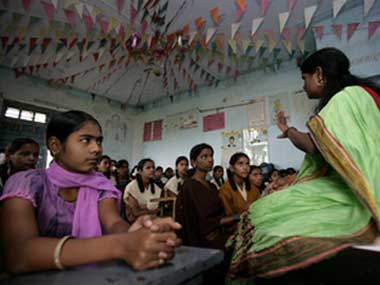Does literacy erase gender biases? Sure, it does. Does illiteracy always lead to gender bias? Well, not quite.
A comparison of literacy rates and child sex ratios (number of girls in the 0-6 age group per 1,000 boys) across states shows that a high literacy rate goes hand-in-hand with above average child sex ratios. However, the converse is not true - low literacy does not necessarily imply a gender bias. In fact, some of the least literate states have healthy child sex ratios.
[caption id=“attachment_5508” align=“alignleft” width=“380” caption=“Surprisingly Bihar, which is one of the worst -performing states in terms of literacy rate, also has a high child sex ratio. Getty Images”]
 [/caption]
[/caption]
FirstPost looked at the 10 best and worst performing states on literacy and their corresponding child sex ratios. For the 10 most literate states, the results were almost as expected. Seven of them (Kerala, Mizoram, Tripura, Goa, Sikkim, Tamil Nadu and Nagaland) also boast of higher than India average child sex ratios (see Table 1). In fact, it should come as no surprise that one of the most literate states (Mizoram), with a literacy rate of 91.6%, also has the highest child sex ratio of 971. The only exceptions to this are Delhi, Himachal Pradesh and Maharashtra.
While this is indeed an encouraging trend, it is interesting to note that six of the 10 worst performing states on literacy also have fairly healthy child sex ratios (Bihar, Arunachal Pradesh, Jharkhand, Andhra Pradesh, Chhattisgarh and Assam, see Table 2). The average child sex ratio for these states is a strong 950, in comparison with the all-India average figure of 914. This is despite the fact that their average literacy rate is at 68.4%, in comparison with the all-India average of 74%. The remaining four have child sex ratios below that of the India average, though here too, Madhya Pradesh is just a tad lower.
So what explains the low child sex ratios of states like Punjab (literacy rate of 76.68 Vs child sex ratio of 846), and Haryana (76.64 Vs 830)? The jury is out on that one. But clearly the link between literacy and gender neutrality is weaker in some regional sub-cultures.
)